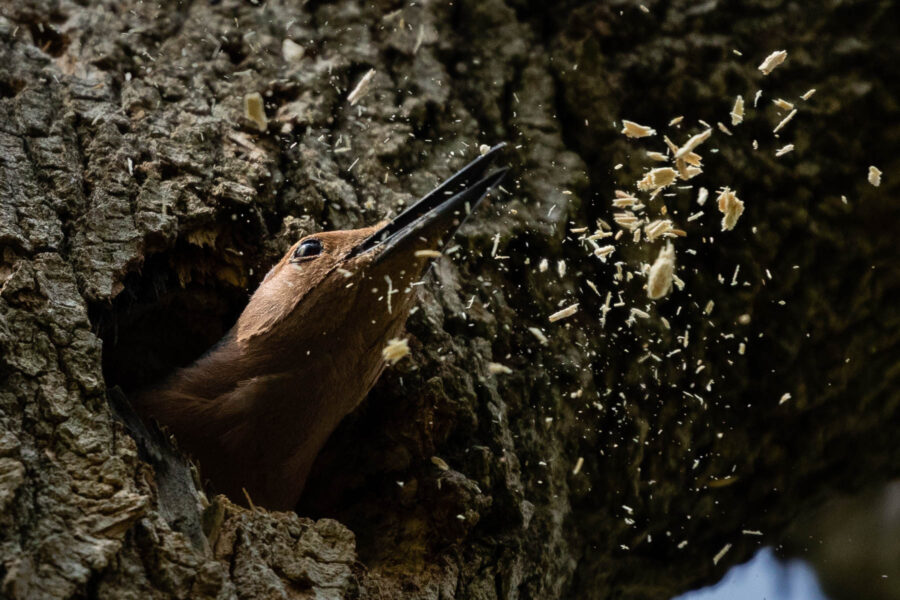The northern flicker is a delightful sight for birders

Imagine you look into a field and see a flash of yellow move from the ground to a nearby tree. What could it be? You might have just seen a northern flicker, a unique species of North American woodpecker.
The flicker is certainly eye-catching with a spotted chest, mottled wings, a black bar on its head and bright yellow on the underside of its wings and tails. The bright color on the underside of its wings is easy to spot as the bird flies from the ground to a nearby roost.
Flickers differ from other woodpeckers in both looks and behavior. Other woodpeckers actually peck wood to search for sap and insects, but flickers stick to dining on the ground. Insects are their favorite food, which they find by pecking at the ground. Their slightly curved beak is the perfect tool to dig into the soil and once they find prey, their long, sticky tongue can extend two inches past the end of their beak to lap up insects.
The flicker is particularly fond of ants. The formic acid created by ants can be irritating and toxic for some species, but flickers can tolerate it. They have been recorded eating as many as 5,000 ants in one sitting. Flickers also take part in a behavior known as “anting.” They will sit on top of an ant mound and let the ants crawl all over them. They will even go as far as picking ants up and placing them on their body. The formic acid that keeps some creatures from eating ants is also effective at fighting parasites and bacteria. It is hypothesized that birds participate in “anting” to prevent and rid themselves of pests.
Flickers stay true to the woodpecker name when it comes to roosting and breeding. They carve holes in trees for their nests and drum on the trunk to communicate with each other. Flickers will create a new nesting site each year and other species will move into their old ones. They prefer woodland edges and use dead wood to create their nests. Although they are currently stable, the species is in decline, which is partly due to a lack of suitable nesting sites. It is important not only for them to be able to access forested land but old-growth forests with plentiful dead wood including pine, cottonwood and willow species.
Flickers can be found throughout North America and will live in the Chesapeake region year-round. To help flickers thrive, consider installing a nesting box and if possible, avoid cutting down trees on your property. Adding plants with winter berries can be a great way to provide habitat and are a winter food source for birds. Next time you’re near a forest edge keep your eyes open for their signature spotted chests and golden wings.

Comments
Excellent excavation photo!
Thank you!
Your comment has been received. Before it can be published, the comment will be reviewed by our team to ensure it adheres with our rules of engagement.
Back to recent stories